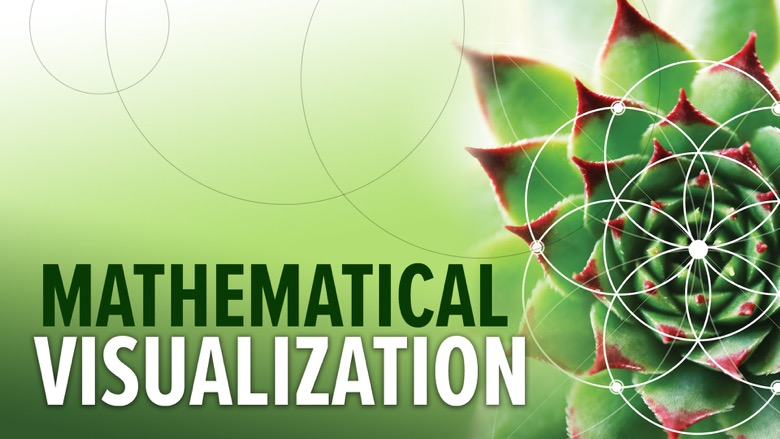در حال حاضر محصولی در سبد خرید شما وجود ندارد.

Many people believe they simply aren’t good at math—that their brains aren’t wired to think mathematically. But just as there are multiple paths to mastering the arts and humanities, there are also alternate approaches to understanding mathematics. One of the most effective methods by far is visualization. If a picture speaks a thousand words, then in mathematics a picture can spawn a thousand ideas.
The Power of Mathematical Visualization teaches you these vital problem-solving skills in a math course unlike any you’ve ever taken. Taught by award-winning Professor James S. Tanton of the Mathematical Association of America (MAA), these 24 half-hour lectures cover topics in arithmetic, algebra, geometry, number theory, probability, statistics, topology, and other fields—all united by fascinating connections that you literally see in graphics and projects designed by Professor Tanton. In demand worldwide for his teacher and student workshops, Dr. Tanton is MAA’s Mathematician-at-Large—a globe-trotting advocate for teaching math “with beauty and joy and wonder and humanness,” as he was recently quoted in The New Yorker magazine.
As an example of Dr. Tanton’s approach, see the many applications of a simple game called dots-and-boxes, which is the gateway to a universe of mathematical concepts and operations– some of which might seem quite unrelated:
And that’s just the beginning. Once your mind is attuned to think about mathematical relationships in terms of visual models such as dots-and-boxes, the insights start to pile up. That’s when you are truly doing mathematics—not just mechanically following an algorithm or formula you memorized in school. Visual thinking lets you see the logical steps that lead to an answer and grasp the solution that must be true.
Throughout the course, Dr. Tanton often adjourns to his tabletop lab to illustrate mathematical ideas with activities that you can try at home, involving poker chips, marbles, strips of paper, and other props. Some seem positively magical, like the miraculous division of a pile of jelly beans in the last lecture, where your method is inspired by a simple folding pattern.
Do Math the Way the Pros Do
Visual thinking is not a trick or a crutch designed for beginners; it is a key technique often employed by professional mathematicians to achieve brilliant insights, forge new paths of discovery, and find deeper connections in the world of mathematics. For this reason, The Power of Mathematical Visualization is suitable for a wide audience, including:
You start the course with pictures that go with grade-school arithmetic. As you study them, you see how they are springboards to more advanced ideas. For instance, visual thinking about multiplication can make perfect sense of why negative times negative is positive. Then you venture deeper, seeing how pictures that help you keep track of combinations of objects lead to Pascal’s triangle and from there to the concept of structure in randomness. And simple exercises in folding paper end up with exquisite fractal images and the consideration of a truly astronomical problem.
Next, the famous Fibonacci numbers come into focus thanks to a visual model that is a well-kept secret. You also learn how symmetry can save the day with quadratic equations. You play with balance points in statistics and the idea of a fixed point in a stirred cup of coffee. And there’s more!
Life Lessons from Math
Dr. Tanton is a charming teacher who makes math both easy and enjoyable with his playful approach. As you might expect from the winner of Raytheon’s Math Hero Award (plus other prizes) and the author of acclaimed books on the delights of math, he has plenty of problem-solving tips, among them:
Mulling comes naturally to Professor Tanton. As a research mathematician, he can’t help sharing a recent discovery he made by contemplating a simple diagram related to the Fibonacci series, turning it over and over in his mind. In Lecture 18, he walks you through the result, which is the world premiere of a brand new theorem. He discusses it exactly as he would with his colleagues over dinner—with barely contained excitement that you will find infectious.
Discover the advantages of seeing math from an entirely new angle, guided by a brilliant and engaging teacher in The Power of Mathematical Visualization.
در این روش نیاز به افزودن محصول به سبد خرید و تکمیل اطلاعات نیست و شما پس از وارد کردن ایمیل خود و طی کردن مراحل پرداخت لینک های دریافت محصولات را در ایمیل خود دریافت خواهید کرد.